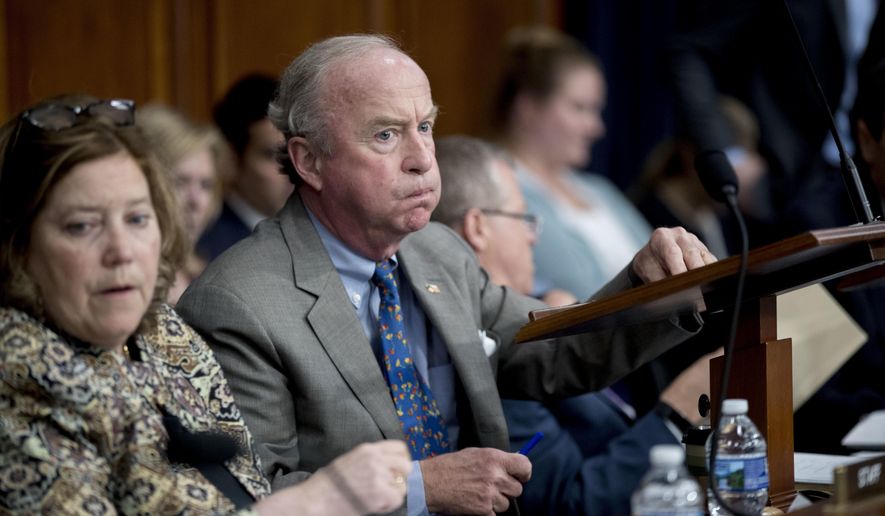House and Senate lawmakers on Thursday said they’ve finalized an approximately $850 billion spending package to fund the Departments of Defense, Labor, Health and Human Services, and Education through September 2019.
The package also includes stopgap funding to keep the government running into early December, which would head off a potential shutdown once current-year funding runs out at the end of the month.
Lawmakers combined the two largest of Congress’s 12 annual spending bills into one package, which now makes up close to two-thirds of next year’s discretionary budget.
“When this bill is signed into law, it will mark the first time in over 20 years that the Department of Defense will have its full yearly appropriation prior to the end of the fiscal year,” said House Appropriations Committee Chairman Rodney Frelinghuysen.
The package also includes money for domestic priorities like the National Institutes of Health, job training programs, and initiatives to combat the opioid epidemic — along with stopgap funding through early December for areas lawmakers won’t have time to finalize.
“This agreement invests in the American people and ensures that the government remains open into December,” said Senate Appropriations Committee Vice Chairman Patrick Leahy, Vermont Democrat.
The Senate could vote on the package as soon as next week.
The House likely won’t vote on it until the final full week of September — just days before current-year funding is due to expire. They left town on Thursday ahead of Hurricane Florence and are scheduled to be out all next week for Yom Kippur.
“We are making real progress here,” said Senate Appropriations Committee Chairman Richard Shelby, Alabama Republican. “If we continue on this path, I am confident we will get this package to the president’s desk by October 1.”
The bill includes about $674 billion for defense — a $20 billion boost from current-year levels.
The package provides money for a 2.6 pay increase for the military, as well as $148 billion for equipment procurement and $96 billion for research and development for new defense systems and technologies.
It also provides a little more than $90 billion for the Department of Health and Human Services, including a $2 billion increase for the National Institutes of Health.
It includes slightly more than $71 billion for the Department of Education and about $12 billion for the Labor Department.
Lawmakers announced the deal hours after the House sent the first three-bill “minibus” package to President Trump to sign. That measure covers spending on energy, water, veterans affairs, military construction, and legislative branch programs.
House and Senate negotiators are hoping to have a four-bill package ready by the end of the month that covers spending on agriculture, environmental, financial services, and transportation programs.
They had already signaled they planned to rely on stopgap funding for the final three bills, which cover spending on homeland security, commerce, justice, science, and state/foreign operations programs.
That would kick tougher fights, like over how much Congress is willing to give Mr. Trump for his desired U.S.-Mexico border wall, until after the November elections.
• David Sherfinski can be reached at dsherfinski@washingtontimes.com.




Please read our comment policy before commenting.